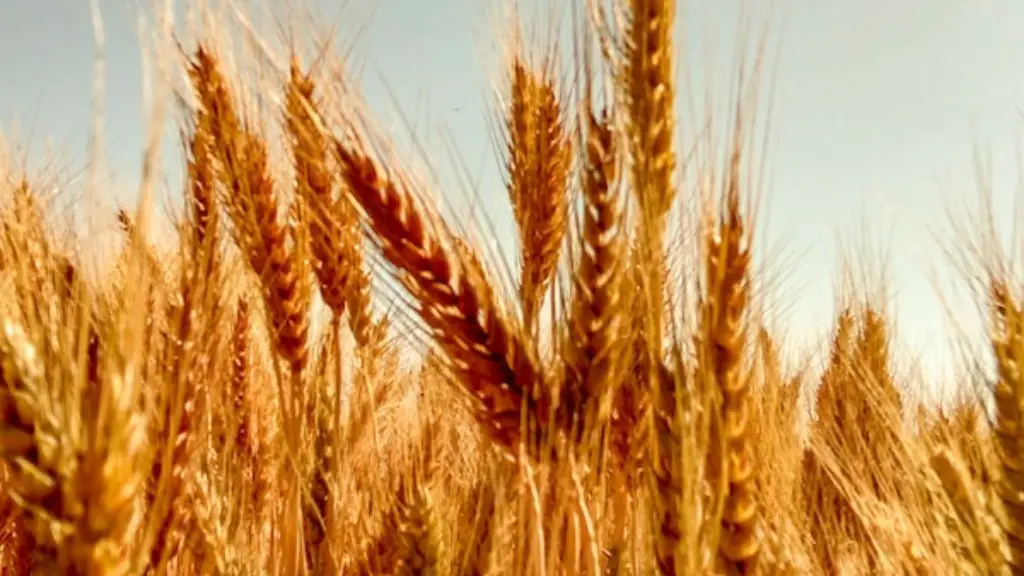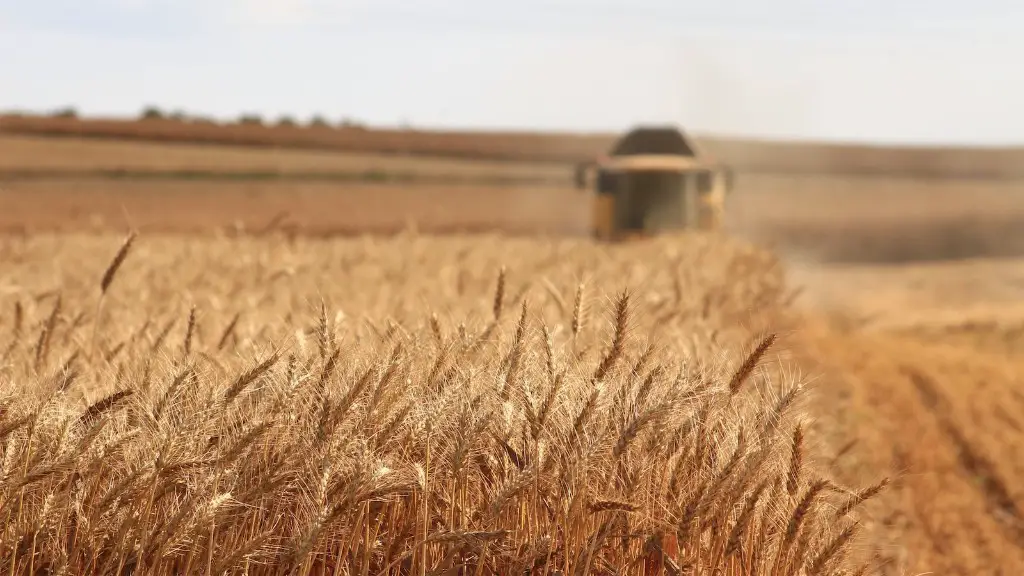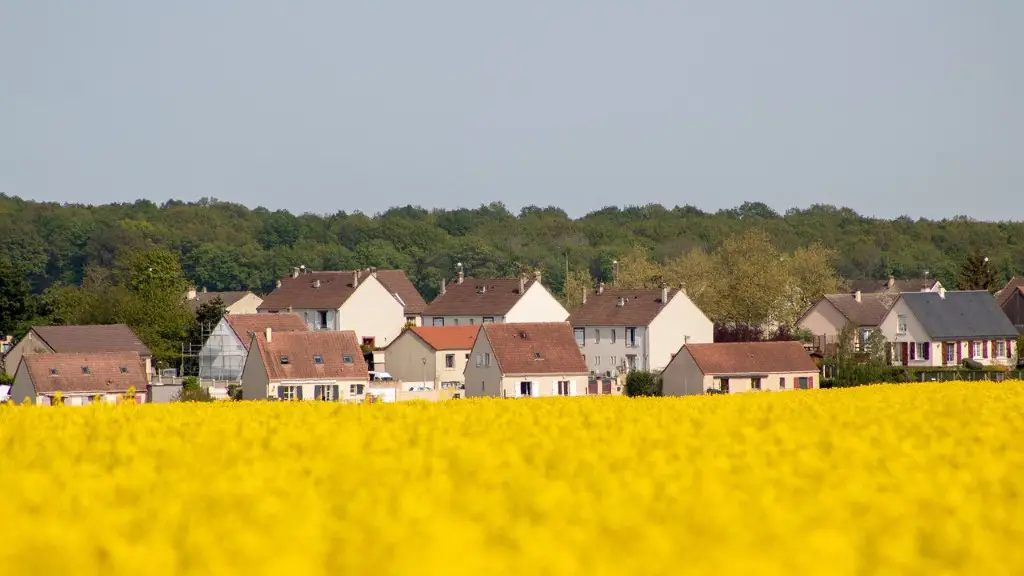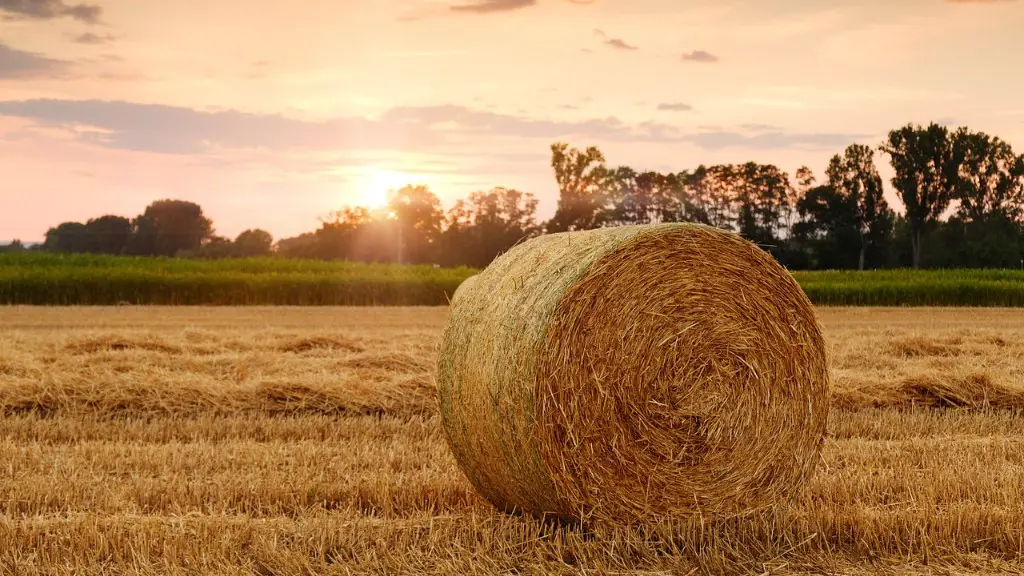The world’s population is projected to reach 9.1 billion by 2050. At the same time, the world’s demand for food is expected to increase by 70%. The current model of agriculture is not sustainable and will not be able to keep up with the demand. Sustainable agriculture is a more environmentally friendly and sustainable way of producing food. It uses less water, fossil fuels, and chemicals, and it produces less waste. Most importantly, it is more productive, so it can provide enough food for the world’s growing population.
There is no one-size-fits-all answer to this question, as the ability of sustainable agriculture to feed the world depends on a number of factors, including the local climate, soil type, and available water resources. However, some studies suggest that sustainable agriculture practices could potentially increase global food production by up to 50% by 2050.
How can we feed the world sustainably?
The world’s population is projected to exceed 9 billion by 2050, and feeding all of these people will be a daunting task. To do so without destroying the planet, we will need to make some major changes.
First, we will need to dramatically reduce the estimated one-third of food that is lost or wasted each year. This can be done through better storage and transportation infrastructure, as well as education campaigns to encourage people to not be so wasteful.
Second, we need to shift the diets of high-meat consumers towards more plant-based foods. This will be difficult, but it is necessary in order to reduce the strain on the world’s resources.
Third, we need to boost crop yields and dramatically increase the output of milk and meat. This can be done through better agricultural practices, as well as by using more efficient livestock breeds.
Finally, we need to improve wild fisheries management and aquaculture. This will help to ensure that we can continue to enjoy seafood for years to come, without damaging the environment.
Making these changes will be difficult, but if we want to feed the world without destroying the planet, it is necessary.
It is good to know that there is a study that shows that it is possible to feed 10 billion people on Earth sustainably. This is important information because it helps to quell some of the fears that people have about overpopulation and climate change. It is important to note, however, that this study does not guarantee that 10 billion people can be fed sustainably – only that it is possible. There are many factors that will affect whether or not this is actually achievable, including the amount of land and resources available, and the willingness of people to change their diets and lifestyles.
Can we feed the world with regenerative agriculture
Regenerative agriculture is a type of farming that focuses on improving the health of the soil. This type of agriculture has been shown to improve the yield of crops, and to reduce the need for heavy machinery, fertilizers and pesticides.
Soil health is a major concern for the future of food production, as it is estimated that there may not be enough soil left to grow food to feed the world within 50 years. Regenerative agriculture may be one way to help improve the health of the world’s soil and to ensure that there is enough food for the future.
We can reduce food loss and waste by taking some simple steps:
1. Store food properly: Store food in clean, dry and well-ventilated areas to prevent spoilage.
2. Donate surplus food: Donate surplus food to food banks or other charities.
3. Compost food waste: Compost food waste instead of throwing it away. This will help create a nutrient-rich soil amendment.
4. Educate others: Educate others about the importance of reducing food loss and waste.
Will we be able to feed the world in 2050?
We need to find a way to produce more food without damaging our natural resources. One way to do this is to use sustainable farming practices. Sustainable farming practices can help us produce more food while protecting our environment.
The world would “absolutely, without question” be able to feed itself in coming decades if it were simply a matter of growing enough food, said Kimberly Flowers, director of the Global Food Security Project at the Center for Strategic and International Studies.
However, Flowers said, the world faces a number of challenges in ensuring that everyone has enough to eat. Among them are climate change, which is making it harder to grow crops in some parts of the world; political instability, which can disrupt food supplies; and poverty, which means people cannot afford to buy food even when it is available.
“The challenge is not that we don’t have enough food,” Flowers said. “The challenge is making sure that everyone has access to the food that exists.”
Flowers said the world needs to do a better job of “sharing the bounty” of food, and that means both producing enough to meet the needs of a growing population and ensuring that food is distributed fairly.
“We can’t just look at production,” she said. “We also have to look at how we’re going to get the food to the people who need it.”
Why can’t organic farming feed the world?
The majority of organic crops rely on imported nitrogen that comes from animal manure. This manure is often from animals that have been fed conventional crops that have been grown with artificial fertilizers. As a result, the organic crops are indirectly getting nitrogen from these fertilizers.
Organic farming methods are those that conserve and regenerate resources while generating healthy food. These methods do not use more chemicals and pollute the environment in order to grow more corn to feed more feedlot animals. Organic farming can indeed feed the world!
Can we sustainably feed a world population of 11 billion
We need to increase food production to feed the world’s growing population, but we also need to do it sustainably. producing enough food is one thing, but producing it affordably and without damaging the environment is another challenge entirely. We need to explore a variety of solutions to meet this challenge.
Topsoil is the layer of soil that is richest in organic matter and microorganisms. It is the uppermost layer of soil and is typically dark in color. Topsoil is important for filtering water, absorbing carbon, and feeding people. Without topsoil, the earth’s ability to do these things would be dramatically decreased.
Why regenerative agriculture doesn’t work?
There are a few disadvantages to regenerative agriculture, though they can be mostly overcome with enough planning and effort. Farmers will need to acquire new knowledge and skills, as regenerative agriculture relies heavily on different techniques than traditional farming. Additionally, less tilling of the soil may lead to more unwelcome plants, though this can be remedied through careful soil selection and management. Some farmers also compensate for the lack of tilling by increasing their use of herbicides.
While there are many negative impacts associated with large-scale livestock operations, there are also some potential benefits to grazing animals rotationally. Rotational grazing, also sometimes called holistic grazing, is a system in which animals are moved to fresh pasture regularly, allowing the previous pasture to recover before being grazed again. This prevents overgrazing and can help to improve soil health. Done properly, rotational grazing can be a more sustainable way to graze animals.
How does sustainable agriculture solve world hunger
It is evident that the productivity of smallholder farmers has a direct impact on their income and overall wellbeing. Given this, it is clear that anything that can be done to increase their productivity would be beneficial, not just to them, but also to the economy as a whole. One way of doing this is by increasing food supply, which in turn lowers food prices. This is beneficial to poor people as they spend a greater share of their income on food. By lowering food prices, they are able to afford more food, which improves their health and wellbeing. In addition, increasing the productivity of smallholder farmers also raises their incomes, further improving their ability to cope. This is a win-win situation for all involved, and so it is important to encourage and support initiatives that aim to increase the productivity of smallholder farmers.
There are a few ways that we can increase profitable farm incomes while promoting environmental stewardship and enhancing the quality of life for farm families and communities. One way is to increase production for human food and fiber needs. This can be done by increasing the yield of crops, raising more livestock, or both. Another way is to improve the efficiency of operations, either through technology or management practices. And finally, we can explore new markets for farm products, either through value-added processing or direct-to-consumer sales. By taking these steps, we can create a more sustainable and prosperous future for our farmers and our country.
What are 5 benefits of sustainable farming?
Sustainable agriculture is a type of agriculture that is practiced with the intention of creating a sustainable environment. There are many benefits of sustainable agriculture, including reducing costs, preventing pollution, saving energy, preventing soil erosion, being animal-friendly, promoting biodiversity, and improving food production with less waste and public health.
Corn is one of the most versatile and widely-grown crops in the world, and it plays an important role in feeding billions of people. However, in a perfect world, we could produce enough corn to feed 24 times as many people as we currently do. This would have a major impact on global hunger and malnutrition, and it would be a huge step towards achieving food security for all.
Which country will rule the world in 2050
These are exciting times for the economies of China, India, and the United States. Together, they are predicted to emerge as the world’s three largest economies in 2050, with a total real US dollar GDP of 70 percent more than the GDP of all the other G20 countries combined. In China and India alone, GDP is predicted to increase by nearly $60 trillion, the current size of the world economy. This growth is sure to bring increased prosperity and opportunity for the people of these countries. It will also mean increased competition for resources and increased pressure on the environment. But if the three countries can work together, there is no reason why they cannot create a bright future for all.
There are a number of steps being taken to try and ensure that everyone receives sufficient food, including:
– Increasing food production through initiatives such as the Green Revolution
– Supporting small-scale farmers and increasing access to land, water, and other resources
– Improving food distribution and access, for example through food banks and other relief programmes
– Working to reduce wastage and losses throughout the food system
– Promoting greater nutrition awareness and education.
Conclusion
Yes, sustainable agriculture can feed the world. It is estimated that sustainable agriculture can produces enough food to feed up to 10 billion people.
The jury is still out on whether sustainable agriculture can feed the world, but there are a number of reasons to believe that it can. For one, sustainable agriculture practices are much more efficient in terms of resource use than conventional agriculture. This means that less land, water, and energy is required to produce the same amount of food. Additionally, sustainable agriculture systems are much more resilient to climate change and other environmental threats than conventional systems. This means that they are more likely to be able to continue producing food in the face of difficult environmental conditions. Finally, sustainable agriculture systems have the potential to improve the livelihoods of small-scale farmers and create more equitable food systems. All of these factors suggest that sustainable agriculture has the potential to feed the world.





